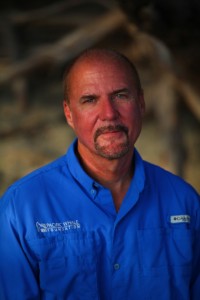PWF’s Kaufman Presents Research at International Meeting
By Maui Now Staff
Pacific Whale Foundation Chief Scientist and Founder Greg Kaufman is presenting six research papers at the International Whaling Commission’s Scientific Committee Meeting scheduled for May 28 through today in San Diego, California. As many as 200 of the world’s leading cetacean scientists will participate in this year’s meeting.
The commission’s Scientific Committee has met since 1950.
At this year’s meeting, PWF has submitted research papers and reports that will be considered by the Whalewatch, Southern Hemisphere Whales and non-deliberate human-induced mortality of large whales subcommittees.
The six research papers that Kaufman will present on behalf of himself and his co-authors include:
“Modeling whale-vessel encounters: the role of speed in mitigating collisions with humpback whales (Megaptera novaeangliae)” looks at the probability of whale-vessel collisions at various speeds using close encounters.
“Note on patterns of area use by humpback whales (Megaptera novaeangliae) in 2013 in Hervey Bay, Australia, with an emphasis on mother-calf dyads” examines the distribution of humpback whales in Hervey Bay in relation to depth and distance from shore. Patterns of area use of mother-calf dyads were of particular interest, being vulnerable to human-related disturbances.
Between August and September 2013, mother-calf dyads showed a preference for shallow waters and specific areas within the eastern side of the bay compared to non-calf groups. These areas overlap with human activities (e.g. whale watching). Understanding habitat preference and patterns of habitat use of humpback whales in Hervey Bay is a prerequisite for effective management of this critical habitat and tourism operations (including recent swim-with-whale trials).
“Evaluating citizen scientist efficacy at cataloging humpback whales (Megaptera novaeangliae) using the crowdsourcing web application Match My Whale” describes the online platform Match My Whale used for photo-identification of humpback whales. This web application has been developed by Pacific Whale Foundation in collaboration with Centre for Whale Research using South Pacific photo-IDs contributed by both organizations.
Members of the public can contribute to whale research by completing research activities or donating their fluke photos to MMW. By crowdsourcing tasks, MMW can perform the work carried out by research groups in a fraction of the time. In this manner, citizen scientists can collaborate with researchers to grow a photo ID catalog rapidly and without the field expense, which often limits long-term continuous data sets.
“Comparison of humpback whale identification catalogues between Ecuador, and South Georgia, and South Georgia and Sandwich Islands: evidence of increased feeding Area I boundary or overlap between feeding areas I and II” examines the use of photo-identification to provide insight into humpback whale migrations, and addresses some uncertainties regarding migratory destinations. A total of 2,131 humpback whales photo-identified in Ecuador were compared to 23 individuals photo-identified from the South Georgia and Sandwich Islands, resulting in one match between Ecuador and the South Sandwich Islands. This constitutes the easternmost migration point recorded for Breeding Stock G, and the longest humpback whale migration registered for this population; over 10,000 kilometers.
“A summary chart of whalewatching areas and operators off the western United States: Alaska, Washington, Oregon and California” is a brief review of whalewatch operations in the western US region.
“Whalewatching growth and socioeconomic development of communities in the Machalilla National Park – Ecuador” analyzes 34 years of visitation records to Machalilla National Park, from 1980 to 2014, to determine the impact of the growing whale-watch industry. Tourism in the park has experienced an average annual growth rate of 19%; from 517 visitors in 1980 to 68,000 in 2014. The Puerto Lopez region has also seen a congruent increase in tourism providers, with 13 reported in 1997 and 148 in 2014. The increase in tourism has been attributed to the presence of humpback whales from June to September, which has led to the development of the Humpback Whale Festival and numerous public policies.
Each of these scientific papers can be downloaded.
“The research work and findings of Pacific Whale Foundation have international significance,” said Kaufman. “Our groundbreaking research of ship strike modeling, innovative crowd sourcing photo-ID software and the discovery of the longest migration of a humpback whale highlight our international efforts. All our work is made possible through the generous support of our members, donations for the international community and funds from our eco-adventures.”
In addition to serving as an invited participant to the International Whaling Commission’s Scientific Committee, Kaufman is also a contributor to the subcommittees on Whalewatching, Southern Hemisphere Whales, Environment and Human induced Mortality. He serves on the Hawaiian Island Humpback National Marine Sanctuary Advisory Committee as the whalewatch representative, is a contributing member to the Southern Oceans Research Partnership, recently co-led the United Nations Environmental Programme’s Regional Workshop on Marine Mammal Watching in the Wider Caribbean Region and workshops for best practices for whale and dolphin watching in the Sultanate of Oman. He is also a the international whalewatch representative to the IWC’s Conservation whalewatch subcommittee and is a contributing author to the development of a “Five Year Global Plan for Whale-Watching.”
Kaufman has authored five books and dozens of scientific and popular articles on whales. As an activist in the international “Save the Whales” movement and a pioneer in non-invasive humpback whale research, he has been a tireless advocate for whales and their ocean habitats worldwide. He founded Pacific Whale Foundation in 1980 with a mission of educating the public from a scientific perspective on the need to save whales and their ocean habitat. Today, Pacific Whale Foundation conducts research, conservation and education programs throughout the world. Pacific Whale Foundation is headquartered on Maui, with satellite offices in Australia and Ecuador and Chile.
Pacific Whale Foundation is a nonprofit 501 (c)(3) charitable organization dedicated to protecting our oceans through science and advocacy. Profits from Pacific Whale Foundation’s ocean eco tours support our research, education and conservation programs.
To learn more about PWF, go online.











